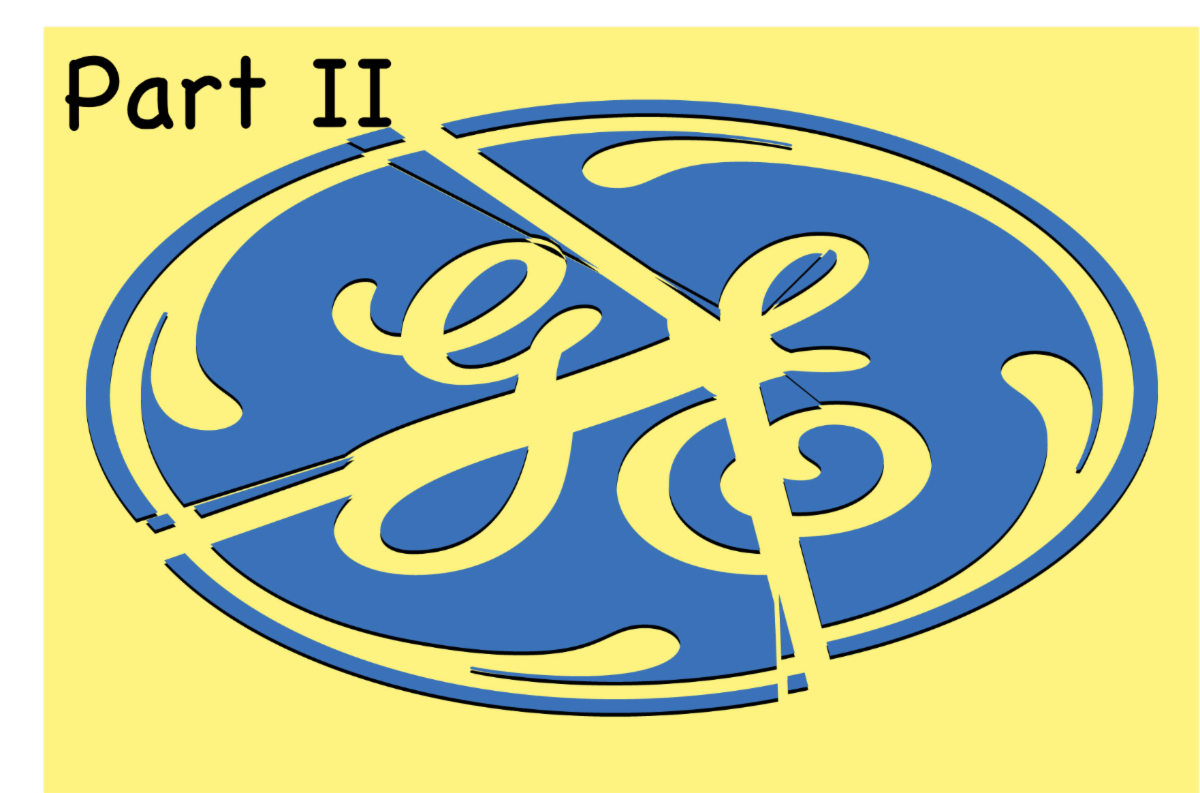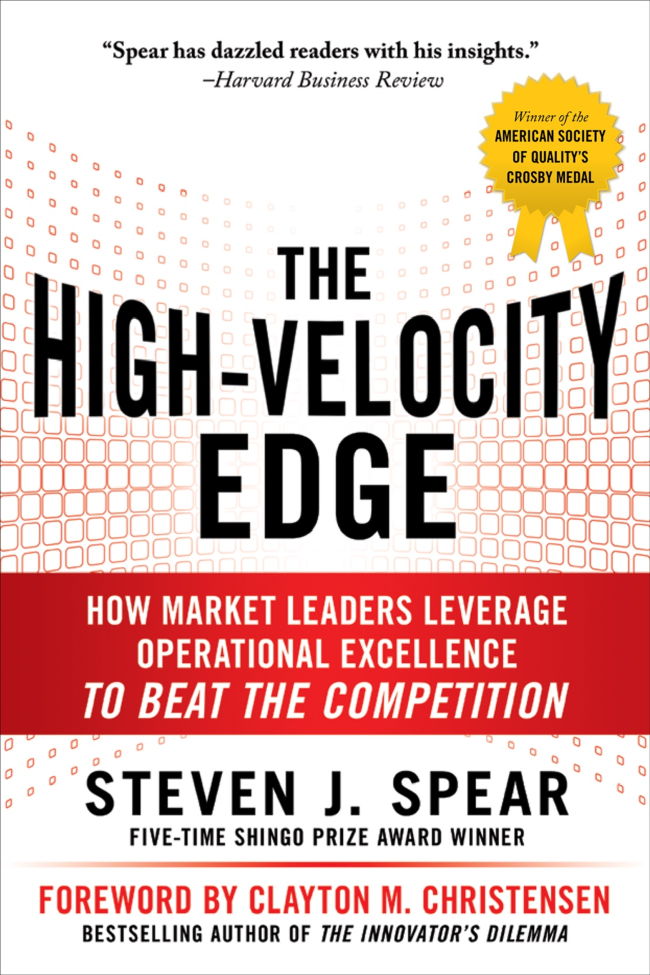
My note, last week, drew on two WSJ articles to contrast alternative views of management at GE (“transactional,” as practiced by Jack Welch and Jeffrey Immelt, the other, “developmental,” by current CEO and Danaher veteran Larry Culp). That note prompted some questions: 1. If Welch was “hailed as manager of the century” and Immelt was consistently praised, do we run the risk of heaping praise prematurely on Larry Culp, given the more recent indictments of Welch and Immelt? 2. What about GE’s famous commitment to quality through its heralded six-sigma programs? 3. What are the stress- and-strain limits of a management system vis a vis diversification within a large enterprise? I’ll start with a framing about different layers at which work gets done—objects on the ‘bench top,’ instrumentation used to manipulate objects on the bench top, and the social overlay of the social circuitry through which individual effort is integrated towards collective purpose. This three-layered framework of objects, instrumentation, and social circuitry may help frame answers to the questions, above. On what ‘layer’ are our creative efforts focused When we think about work in general (and this is especially true when we think about innovation), our focus is often first on the object in front of us—the gear, the gizmo, the gadget, the circuit or the code (genetic or software). It’s into this that we try to impart our wisdom about its design, in order to achieve the performance that we want. We also tend to focus on the design and operation of the ‘instrumentation’ through which we express our best understanding—CRISPR for genes, machine tools for gears, photolithography and etching gear for circuits, etc. That second layer too is an ‘engineered object,’ with a design that’s reflective of our best scientific and engineering understanding, with the intent of achieving performance of a desired type. There’s a third layer that’s (too) often overlooked as an object of deliberate engineering effort, yet which also determines the efficacy and efficiency of people engaged in collaborative work. That’s the social overlay of (enterprise) processes through which individual efforts are integrated in coordinated effort towards common purpose. We’ve come to describe this as the ’social circuitry’ of the organization. Very often this social overlay emerges, but less often is its design, construction, operation, and improvement intentional. Choosing to call this social overlay ’social circuitry’ is deliberate, not metaphorical. An electrical circuit creates a link between where charge is concentrated and where it is sparse. And, if we want the flow of charge to be effective and efficient, we intentionally design that circuit to be simpler than not, with concern about reducing detours, impedances, reroutes, lags, latencies, and leaks. With plumbing ‘circuits’ too, we’re trying to enable the flow of material from a place of concentration to absence, intentionally designing pipes and valves to minimize the material and energy loss in the transfer. Communication channels are similarly designed intentionally to allow the transmission of signal efficiently, effectively, and with high fidelity from where it is generated to where it is received. A similar logic applies to organizations, where value generation is collaborative and mutually dependent, not individual and isolated. Our work most typically depends on the movement of information and ideas between those who have them and those who need them, so that those ideas develop quickly and well (sometimes and eventually expressed through physical action). [If we’ve doubt on that preponderant value of the data driven, intellectual, conceptual aspect of work versus the value in the “purely” physical, consider the enormous valuations ascribed to the ‘data science’ element of enterprises’ work versus the purely mechanical. The generation, transmission, processing, and acting on of information is a substantial portion of value in products—e.g., the 100s of millions of lines of code in a modern car, services—e.g., the ability or not of airlines to rejigger routes, crew assignments, fares, etc. with speed and accuracy.] Therefore, and it’s well established in research and practice, organizations with the most effective mapping of who is in collaborative, creative conversation with whom about what, when, where, and how better generate, mature, and deliver new and useful ideas quickly and plentifully. Those with inferior ’social circuitry’ are less able. Again, there’s well established evidence that all else equal—market, science and technology, etc.—some enterprises are consistently (far) better at generating and delivering value, and these examples exist across myriad sectors and across the spectrum from way upstream discovery, through development, design, and delivery. |
 |
Having this framing of ‘bench top’ objects, instrumentation, and social circuitry gets address the questions outlined, above. DIDN’T GE CHAMPION SIX SIGMA: As for six-sigma, it is very possible that GE (and other six sigma organizations) were energetic and productive in improving their product (and service) quality using six-sigma methodologies; that’s focusing on the “object” layer of work. And it is also possible that they gained substantial mastery of the ‘instrumentation’ they used to do their work. Less likely is that they applied six sigma’s disciplined problem-solving techniques to the ’social circuitry’ at large. I make this assertion, having had exposure to many six-sigma, lean six-sigma, and other ‘quality’ initiatives at various firms. True, it is not uncommon to see six sigma applied locally—a line segment, a production cell, and element of a larger administrative process. Rarely, if ever, have I seen whole scale enterprise processes be subjected to such critique and systematic overhaul, aside from Toyota, which is quite deliberate at designing and operating this layer in a methodical fashion. [see, for example, the “system-pathway-connection-activity” framework in Chapter 6 of The High Velocity Edge. For that framework applied in drug discovery, please see this “Accelerating Discovery” white paper. Also, the Pratt & Whitney example in Chapter 5 of The HVE.] RISK OF CELEBRITY LEADERSHIP FOR LARRY CULP: It’s certainly fair to worry that Larry Culp’s actions today are not based on some deep, resilient management theory, but in fact they are merely actions that are only valid given the temporary context in which they are made. As for reason to have such concern, there’s the possibility much of Jack Welch’s “genius” may well have been coincidental to the times. GE Finance was some 40 percent of the company’s market capitalization and was providing subsidization of its industrial businesses. It happened to be generating enormous profits (and funding an active mergers and acquisitions practice) right when the financial markets were liberalizing and financial institutions in general were taking advantage of the junk bond market, leveraged buyouts, and collateralized assets to vastly expand their M&A and trading businesses. For reference, Welch ran GE from 1981 to 2001. That overlaps nearly perfectly with when Michael Milken, T Boone Pickens, Carl Icahn, Kohlberg Kravis Roberts, etc. were using new products to exploit wildly swollen arbitrage opportunities.] That said, there’s reason to believe that Culp is of a different cloth. Before GE, he had a two decade career at Danaher Corp, where he was CEO from 2001 to 2014, and my impression is that Danaher has developed a management system in terms active design, operation, and improvement of businesses’ “social circuitry” that is closer in fidelity to Toyota’s management system than are most. This is based on some first hand exposure to Danaher and written accounts by leaders with long time connection to it—George Koenigsaecker in Leading the Lean Enterprise Transformation, Mark DeLuzio “architect of the Danaher Business System” in Flatlined. Their narrative is not some isolated groups making decisions seated around a table, like in the Immelt annual report quote. It is of leaders crawling into the inner workings of industrial, design, and administrative processes looking for opportunity to rearchitect them, developing the talent of their associates to do the same. STRESS- AND-STRAIN LIMITS OF DIVERSIFICATION: The premise of conglomeration was that certain management systems were so inherently superior, that mastery of them would provide competency managing enterprises of any type. That at least was justification for the diversity found in the portfolios of conglomerates like GE, ITT, and some private equity firms, etc. The more jaded view (mentioned above and below) is that these companies, at their core, didn’t have bona fide holistic systems for managing the design, operation, and improvement of processes spanning development, design, and delivery with all their administrative counterparts. Rather, they were narrowly focused transactional systems for identifying ‘undervalued’ assets that could be financially re engineered through divestment, downsizing, etc. However, let’s say for the moment there are some bona fide management systems that have seemed to prove their enduring worth. [Toyota certainly provides an example having established its leadership position in the 80s and sustaining its leadership for decades, by expanding beyond “affordable reliability” as its main identifier to being a leader in brand creation (Lexus) and technology development and deployment (hybrid).]. Are there limits to their application? I would offer that yes, there are, but the limits are not that of the management system’s basic principles of design, operation, and improvement. Rather, the limitation is that of their practitioners to meld the management system’s principles to the range of workplace situations that have to be managed. Said differently, the limitation is not purely on principles for designing the social overlay (social circuitry) layer. The limitation is on our ability to harmonize that layer with the engineering and scientific realities of the other conceptual layers—the “objects” in front of us and the “instrumentation” through which we work. Perhaps that is why we see that Toyota is successful across swaths of auto sector activity, we also see its activities focused in the auto sector. It’s not necessarily that the management system doesn’t travel (in fact, I’ve made a point in writing, teaching, and consulting that the principles do apply broadly), it’s that the expertise to apply it deeply in one realm takes considerable time to develop and, like stem cells that differentiate, the skills become more situationally specific. |
| Steven Spear DBA MS MS Principal, See to Solve LLC Senior Lecturer, MIT Sloan School of Management Senior Fellow, Institute for Healthcare Improvement Author, The High Velocity Edge |

| Click here for sample chapters from The High Velocity Edge • leadership and crisis recovery (chapters 9 and 10) • accelerating development of break through technologies (chapter 5) |
Read Related Article: Why Welch’s GM Failed & Lessons from Culp’s Turnaround Part 1
